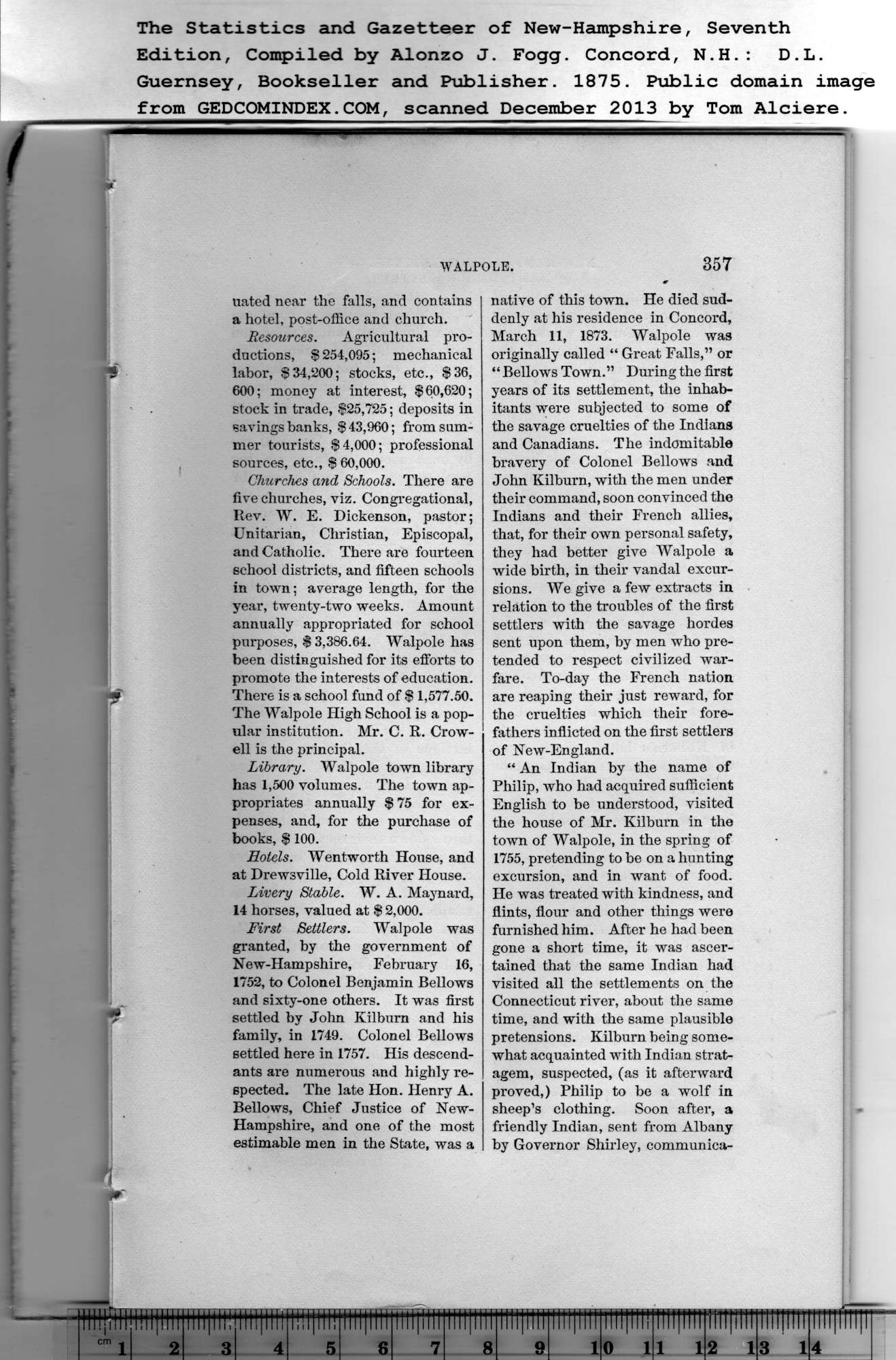|
uated near the falls, and contains
a hotel, post-office and church.
Resources. Agricultural pro-
ductions, 8 254,095; mechanical
labor, 834,200; stocks, etc., $36,
600; money at interest, $60,620;
stock in trade, $25,725; deposits in
savings banks, $43,960; from sum-
mer tourists, $4,000; professional
sources, ete., $ 60,000.
Churches and Schools. There are
five churches, viz. Congregational,
Rev. W. E. Dickenson, pastor;
Unitarian, Christian, Episcopal,
and Catholic. There are fourteen
school districts, and fifteen schools
in town; average length, for the
year, twenty-two weeks. Amount
annually appropriated for school
purposes, $ 3,386.64. Walpole has
been distinguished for its efforts to
promote the interests of education.
There is a school fund of $ 1,577.50.
The Walpole High School is a pop-
ular institution. Mr. C. R. Crow-
ell is the principal.
Library. Walpole town library
has 1,500 volumes. The town ap-
propriates annually $ 75 for ex-
penses, and, for the purchase of
books, $ 100.
Hotels. Wentworth House, and
at Drewsville, Cold River House.
Livery Stable. W. A. Maynard,
14 horses, valued at $ 2,000.
First Settlers. Walpole was
granted, by the government of
New-Hampshire, February 16, |
1752, to Colonel Benjamin Bellows
and sixty-one others. It was first
settled by John Kilburn and his
family, in 1749. Colonel Bellows
settled here in 1757. His descend-
ants are numerous and highly re-
spected. The late Hon. Henry A.
Bellows, Chief Justice of New-
Hampshire, and one of the most
estimable men in the State, was a
native of this town. He died sud-
denly at his residence in Concord,
March 11, 1873. Walpole was
originally called “ Great Falls,” or
“ Bellows Town.” During the first
years of its settlement, the inhab-
itants were subjected to some of
the savage cruelties of the Indians
and Canadians. The indomitable
bravery of Colonel Bellows and
John Kilburn, with the men under
their command, soon convinced the
Indians and their French allies,
that, for their own personal safety,
they had better give Walpole a
wide birth, in their vandal excur-
sions. We give a few extracts in
relation to the troubles of the first
settlers with the savage hordes
sent upon them, by men who pre-
tended to respect civilized war-
fare. To-day the French nation
are reaping their just reward, for
the cruelties which their fore-
fathers inflicted on the first settlers
of New-England.
“ An Indian by the name of
Philip, who had acquired sufficient
English to be understood, visited
the house of Mr. Kilburn in the
town of Walpole, in the spring of
1755, pretending to be on a hunting
excursion, and in want of food.
He was treated with kindness, and
flints, flour and other things were
furnished him. After he had been
gone a short time, it was ascer-
tained that the same Indian had
visited all the settlements on the
Connecticut river, about the same
time, and with the same plausible
pretensions. Kilburn being some-
what acquainted with Indian strat-
agem, suspected, (as it afterward
proved,) Philip to be a wolf in
sheep’s clothing. Soon after, a
friendly Indian, sent from Albany
by Governor Shirley, communica- |
